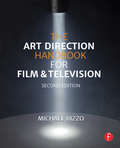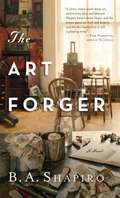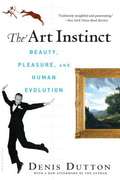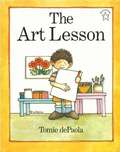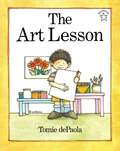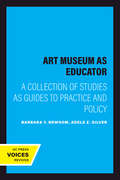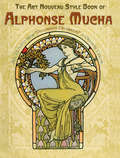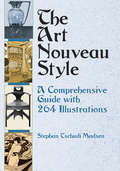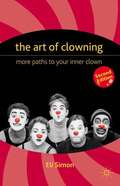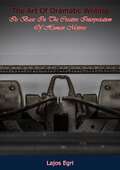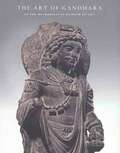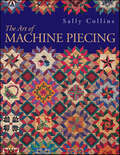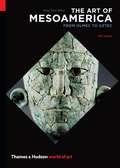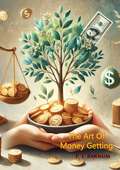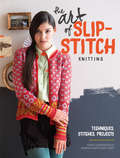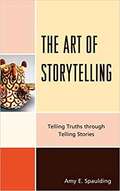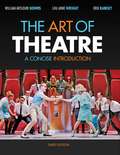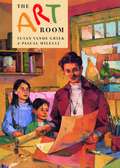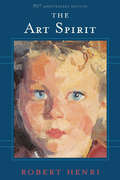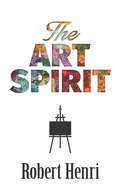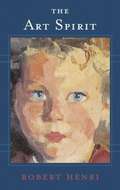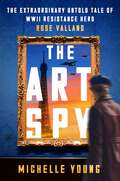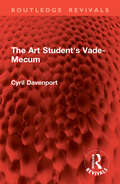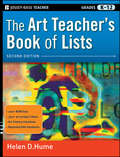- Table View
- List View
The Art Direction Handbook for Film & Television
by Michael RizzoIn this new and expanded edition of The Art Direction Handbook, author Michael Rizzo now covers art direction for television, in addition to updated coverage of film design. This comprehensive, professional manual details the set-up of the art department and the day-to-day job duties: scouting for locations, research, executing the design concept, supervising scenery construction, and surviving production. Beyond that, there is an emphasis on not just how to do the job, but how to succeed and secure other jobs. Rounding out the text is an extensive collection of useful forms and checklists, as well as interviews with prominent art directors.
The Art Forger
by B. A. Shapiro[from the back cover] "On March 18, 1990, thirteen works of art worth today over $500 million were stolen from Boston's Isabella Stewart Gardner Museum. The crime remains unsolved. Claire Rothj a struggling young artist, is about to discover that there's more to this art heist than meets the eye. Striking a Faustian bargain with a powerful gallery owner, Claire agrees to forge a painting in exchange for a one-woman show. But her suspicions about the painting lead Claire to nineteenth-century secrets ... which may be the only evidence that can now save her life.""
The Art Instinct: Beauty, Pleasure, & Human Evolution
by Denis DuttonThe Art Instinct combines two of the most fascinating and contentious disciplines, art and evolutionary science, in a provocative new work that will revolutionize the way art itself is perceived. Aesthetic taste, argues Denis Dutton, is an evolutionary trait, and is shaped by natural selection. It's not, as almost all contemporary art criticism and academic theory would have it, "socially constructed.
The Art Lesson
by Tomie DepaolaTommy knows he wants to be an artist when he grows up. He can't wait to get to school and have real art lessons. When Tommy gets to school and finds out that the art lessons are full of "rules," he is surprised and dismayed. How the wise art teacher finds a way to give Tommy the freedom to create and stay within the "rules" makes a wonderfully perceptive picture book about growing up and keeping one's individuality. Tomie dePaola is the author and illustrator of many beloved books for children, including the Caldecott Honor Book Strega Nona. Fans of all ages will be pleased to hear that The Art Lesson is, in fact, based on the artist's own experiences growing up, and offers a welcome glimpse into his past. This bright picture book is as covered with drawings as the walls of Tommy's parents' and grandparents' houses, and sends an inspirational message to budding artists and individualists. Break out the crayons!
The Art Lesson
by Tomie dePaolaTommy knows he wants to be an artist when he grows up. He can't wait to get to school and have real art lessons. When Tommy gets to school and finds out that the art lessons are full of "rules", he is surprised and dismayed. How the wise art teacher finds a way to give Tommy the freedom to create and stay within the "rules" makes a wonderfully perceptive picture book about growing up and keeping one's individuality.Tomie dePaola is the author and illustrator of many beloved books for children, including the Caldecott Honor Book Strega Nona. Fans of all ages will be pleased to hear that The Art Lesson is, in fact, based on the artist's own experiences growing up, and offers a welcome glimpse into his past. This bright picture book is as covered with drawings as the walls of Tommy's parents' and grandparents' houses, and sends an inspirational message to budding artists and individualists. Break out the crayons!
The Art Museum as Educator: A Collection of Studies as Guides to Practice and Policy
by Barbara Y. Newsom Adele Z. SilverThis title is part of UC Press's Voices Revived program, which commemorates University of California Press’s mission to seek out and cultivate the brightest minds and give them voice, reach, and impact. Drawing on a backlist dating to 1893, Voices Revived makes high-quality, peer-reviewed scholarship accessible once again using print-on-demand technology. This title was originally published in 1978.
The Art Nouveau Style Book of Alphonse Mucha
by Alphonse MuchaTo the general public, Alphonse Maria Mucha (1860-1939) is perhaps best known for his posters of Sarah Bernhardt and magnificent decorative panels such as "The Seasons" -- works that continue to grow in popularity and value as the resurgence of interest in Art Nouveau increases. Among graphic artists and commercial designers, Mucha is praised for the innovative style books that pioneered the use of Art Nouveau in commercial packaging, design, and ornament.The most important of these style books was Documents Décoratifs, published in 1901 at the height of Mucha's fame as the high priest of the Art Nouveau movement. While the artist's fame rests largely on his posters, it is in the smaller works of the style books, or design portfolios, that the refinement of his technique can best be appreciated. The present volume, carefully reproduced from an extremely rare and valuable set of originals, contains all 72 plates of the Documents Décoratifs portfolio. Included are designs for jewelry, wallpaper, stained glass, furniture, and tableware; figure and botanical studies; and a selection of Mucha's famous panneaux décoratifs. Eighteen of the plates are in full color, while the remaining 54 are reproduced in two or more color tones.In addition to numerous innovative designs for practical and decorative objects, the elegant draftsmanship and meticulous execution that characterized all of Mucha's work is evident in studies of langorous nudes, portrait sketches, delicately rendered plant and animal motifs, exquisite modeling of drapery and cloth, and the flowing, fantastic forms created as experiments in pure design. In the Foreword by Gabriel Mourey, specially translated for this edition, Mucha's own philosophy of art, and the relation of the Documents to the rest of his work, receive an appreciative and informative discussion.Hitherto available only in scattered sources, or in the libraries of wealthy collectors, the complete Documents Décoratifs is now available in this inexpensive one-volume edition. Lovers of Mucha's work, admirers of Art Nouveau, and the application of that style to the decorative arts, will want to own this fine royalty-free collection by one of the greatest masters of the technique."[Documents Décoratifs is] . . . an encyclopedic source for Mucha's style in every branch of decorative and applied art and one of the few books on design where even individual plates are sought after by collectors." -- Marina Henderson, The Graphic Style of Alphonse Mucha
The Art Nouveau Style: A Comprehensive Guide with 264 Illustrations
by Stephan Tschudi MadsenA revolutionary reaction to traditional nineteenth-century art, the turn-of-the-century Art Nouveau movement drew much of its inspiration from nature. Applying its sinuous, curvilinear motifs to the decorative arts, graphics, architecture, sculpture, and painting, artists and craftspeople attempted to create a style suitable for a "modern" age. In this absorbing, exceptionally detailed, and well-researched book (one of the first scholarly works to revive interest in the style after World War II), a noted Norwegian authority on the subject examines the movement in depth. Stephan Madsen offers a wealth of facts and insights about the origins and development of the style; trends leading up to Art Nouveau, including the influence of Blake and the Pre-Raphaelites; early Art Nouveau posters and book illustrations; and its use in architectural ornamentation, furniture, jewelry, wrought-iron, glass, and other applied arts. A magnificent selection of 264 photographs and line drawings accompanies the text, which gives broad coverage to the movement, as well as insightful discussions of such important artists as Emile Gallé, Alphonse Mucha, Walter Crane, Charles Rennie Mackintosh, Aubrey Beardsley, Henry Van de Velde, Victor Horta, William Morris, and Eugène Grasset.Artists and students, admirers of Art Nouveau, and anyone interested in this enduring and influential style will welcome Professor Madsen's expert, fully documented study.
The Art Of Clowning
by Eli SimonAcclaimed by readers and reviewers alike, the first volume of The Presidio and Militia on the Northern Frontier of New Spain was a landmark in the documentary study of seventeenth-century Spanish Colonial Mexico. Here, Charles W. Polzer and Thomas E. Sheridan bring the same incisive scholarship and careful editing to long-awaited Volume Two, covering the years 1700-1765. The two-part second volume looks at the Spanish expansion as occurring in four north-south corridors that carried the main components of social and political activity. Divided geographically, materials in this book (part 1) relate to the two westernmost corridors, while those in the projected book (part 2) will cover the corridors north to New Mexico and northeast into Texas. Documents in both books demonstrate the importance of regional hostilities rather than exterior threats in the establishment of presidios. Materials in this book relate to events and episodes in the Californias (the peninsula of Baja California) where the situation of the presidial forces was unique in New Spain. By bringing into focus the ways that civil-religious relations affected the military garrison there, these documents contribute immeasurably to a greater understanding of how California itself emerged in history. Also covering Sinaloa and Sonora, the mainland of the west coast of New Spain, records in the book reveal how the Sinaloa coastal forces differed from those in the interior and how they were depended upon for protection in the northern expansion, both civil and missionary. Because documents on the presidios in northern New Spain are vast in number and varied in content, these selections are meant to provide for the reader or researcher a framework around which more elaborate studies might be constructed. All of the records have been translated from the Spanish language into readable, modern English and are accompanied by transcribed versions of the originals. Valuable to both non-specialists and specialists, here is an unparalleled resource important not only for the careful selection, preparation, and presentation of documents, but also for the excellent background information that puts them into context and makes them come alive.
The Art Of Dramatic Writing: Its Basis In The Creative Interpretation Of Human Motives
by Lajos EgriAmong the many "how-to" playwriting books that have appeared over the years, there have been few that attempt to analyze the mysteries of play construction. Lajos Egri's classic does just that, with instruction that can be applied equally well to a short story, novel, or screenplay. Examining a play from the inside out, Egri starts with the heart of any drama: its characters. All good dramatic writing hinges on people and their relationships, which serve to move the story forward and give it life, as well as an understanding of human motives--why people act the way that they do. Using examples from everything from William Shakespeare's Romeo and Juliet to Henrik Ibsen's A Doll 's House, Egri shows how it is essential for the author to have a basic premise--a thesis, demonstrated in terms of human behavior--and to develop the dramatic conflict on the basis of that behavior. Using Egri's ABCs of premise, character, and conflict, The Art of Dramatic Writing is a direct, jargon-free approach to the problem of achieving truth in writing. Print ed.“THIS book was written not only for authors and playwrights, but for the general public. If the reading public understands the mechanism of writing, if that public becomes aware of the hardships, the tremendous effort that goes into any and all literary work, appreciation will become more spontaneous.The reader will find at the end of this book synopses of plays, analyzed according to dialectics. We hope these will add to the reader’s understanding of novels and short stories in general, and of plays and movies in particular.We have based our theory on the eternally changing “character” who forever reacts, almost violently, to constantly changing internal and external stimuli.”-Foreword.
The Art Of Gandhara In The Metropolitan Museum Of Art
by Kurt A. BehrendtGandhara was an ancient region of Pakistan that controlled a series of key passes for Silk Road trade among India, China, and Mediterranean lands. This steady commerce provided the financial foundation for the sustained patronage of luxury goods as well as Buddhist monastic sites and devotional sculpture. Drawing on the collections of The Metropolitan Museum of Art, this book traces the complex and changing artistic tradition of Gandhara, from Northwest Pakistan and Eastern Afghanistan in the 2nd century BC until the 8th century.This book also explores early urban material, international trade, and the emergence and development of Buddhist art in the region, specifically addressing the relic tradition, narrative art, and iconic representations of Buddhas and bodhisattvas. The latest period of production is characterized by the fabrication of monumental imagery as well as the clay and stucco production of Afghanistan.
The Art Of Machine Piecing
by Sally CollinsHere are easy-to-learn precision piecing methods that will help you attain quality workmanship and extraordinary quilts. Sally shows how to enjoy the journey from design idea to quilted reality! Patterns for 49 traditional-style blocks in 3 sizes Instructions for making a knock-your-socks-off sampler quilt that uses all 49 blocks The ultimate how-to guide for precision machine piecing, offering detailed information on choosing appropriate fabrics and drafting patterns Inspiration and ideas from a gallery of beautiful small quilts and gifts Lessons on how to critique your own work and correct problems *Important Note about PRINT ON DEMAND Editions: This title will be printed after purchase and will arrive separately from any in-stock items. Please allow approximately 2 weeks for USA delivery, with an additional 2 weeks for international shipments. Expedited shipping is not available on POD Editions. The printing quality in this copy will vary from the original offset printing edition and may look more saturated due to printing on demand by a high-quality printer on uncoated (non-glossy) paper. The information presented in this version is the same as the most recent printed edition. Any pattern pullouts have been separated and presented as single pages.
The Art Of Mesoamerica: From Olmec To Aztec (World Of Art Series)
by Mary MillerMary Ellen Miller evocatively surveys the artistic achievements of the high pre-Columbian civilizations―Olmec, Maya, Teotihuacan, Toltec, Aztecas well as those of their less well-known contemporaries. <P><P>Their pyramids and palaces, jades and brightly colored paintings emerge from these pages as vividly as when they first astonished Cortes's men in 1519.
The Art Of Money Getting: Large Print
by P. T. BarnumP. T. Barnum’s "The Art of Money Getting" is a timeless guide to achieving financial success, filled with practical advice and insights from one of America’s most famous showmen and businessmen. First published in 1880, Barnum’s wisdom on wealth accumulation remains relevant today, offering readers a blend of common sense, business acumen, and moral guidance.In this classic work, Barnum shares his principles for acquiring wealth, emphasizing the importance of hard work, integrity, and smart decision-making. His straightforward and engaging writing style makes complex financial concepts accessible to readers from all walks of life, ensuring that anyone can benefit from his advice.Key themes in "The Art of Money Getting" include:1. Industry and Perseverance: Barnum highlights the value of dedication and hard work as fundamental to financial success. He encourages readers to be industrious and persistent in their pursuits, never giving up in the face of adversity.2. Integrity and Honesty: Ethical behavior and honesty are cornerstones of Barnum’s philosophy. He believes that trustworthiness and a good reputation are essential assets in business and life.3. Thrift and Economy: Barnum advises readers to manage their finances wisely, avoid unnecessary expenses, and practice frugality. He emphasizes the importance of saving and investing prudently.4. Self-Reliance and Confidence: Believing in oneself and one’s abilities is crucial for success. Barnum encourages readers to be self-reliant, confident, and proactive in seizing opportunities.5. Learning and Adaptability: Continuous learning and the ability to adapt to changing circumstances are vital. Barnum stresses the need to stay informed and be open to new ideas and innovations.6. Customer Service and Satisfaction: Providing excellent service and ensuring customer satisfaction are key to building a successful business. Barnum underscores the importance of understanding and meeting the needs of clients.
The Art Of Slip-Stitch Knitting: Techniques, Stitches, Projects
by Faina Goberstein Simona Merchant-DestA Fresh Look at a Classic TechniqueSlip stitch is one of the simplest and most versatile knitting techniques, but it's often overlooked. The Art of Slip-Stitch Knitting is a modern and thorough take on this technique that delivers beautiful colorwork and gorgeous textures--with minimal effort.A complete overview covers all the basics of slip-stitch knitting, including stitch formation, reading charts, customizing stitch patterns, choosing yarns, designing with slip-stitch patterns, and more. Forty stitch patterns, many of which are reversible, stretch the boundaries of slip stitch, creating colorwork that is just as graphic as Fair Isle, but much simpler; woven-looking fabrics; and fabulous textures that are sometimes combined with lace and cables. Sixteen original projects for cardigans, pullovers, hats, bags, scarves, and more showcase the versatility of slip stitch by using it as an allover pattern or accent.Whether you're new to this exciting stitch or looking to go beyond the basics, The Art of Slip-Stitch Knitting is your essential guide.
The Art Of Storytelling: Telling Truths Through Telling Stories
by Amy E. SpauldingStorytelling is an art, as well as a skill. It allows the listener to take an idea and shape it into something that is relatable on a personal level. In The Art of Storytelling: Telling Truths Through Telling Stories, Amy E. Spaulding enables the reader to learn how to develop this skill, while also discovering the tradition of storytelling. Spaulding covers a wide array of important storytelling elements, from advice on choosing, learning, and presenting the stories to discussions on the importance of storytelling through human history and its continued significance today. This book includes an annotated list of stories, as well as a bibliography of collections and a brief list of recommendations for online sources. Designed for anyone who wants to develop the skill of telling stories, The Art of Storytelling is a resource for drama students, teachers, librarians, and for those learning on their own without a formal class setting.
The Art Of Theatre: A Concise Introduction
by William Downs Erik Ramsey Lou WrightTHE ART OF THEATRE: A CONCISE INTRODUCTION, Third Edition, explores issues of cultural diversity and creativity, presents a full day-in-the-life of theatre, and offers briefer coverage of theatre history. The authors make timely and relevant connections between theatre and the familiar world of television and film to help students understand how the living art of theatre relates to and influences today's screen entertainment.
The Art Room: Drawing and Painting with Emily Carr
by Susan Vande GriekThe Art Room delights readers with a glimpse into the world of artistic expression, fun and freedom that renowned Northwest Coast artist Emily Carr created for her students. For any child who loves art, it would be the gift of a lifetime to be able to study with a great contemporary artist. This delightful story-poem recreates the wonderful world of “the art room,” where famous Northwest Coast painter Emily Carr taught drawing and painting to children to support herself in the early 1900s. Filled with Carr’s love of animals, her insistence on painting from life and nature, and the sense of fun and freedom that she inspired in her young students, author Susan Vande Griek provides a fascinating glimpse into the life of this extraordinarily gifted artist. It is also a book bound to inspire today’s children to make an “art room” of their own. Illustrator Pascal Milelli has brilliantly accomplished the very difficult job of painting a book about a painter. His rich style is a perfect foil for the work that Carr was doing at the time. This book reminds us of what a joyous experience art can be, and can serve as an inspiration to children who love to look at the world and try to reflect its beauty in their own creations. This edition features an updated font and an author’s note. Key Text Features biographical note Correlates to the Common Core State Standards in English Language Arts: CCSS.ELA-LITERACY.RL.1.7 Use illustrations and details in a story to describe its characters, setting, or events. CCSS.ELA-LITERACY.RL.2.4 Describe how words and phrases (e.g., regular beats, alliteration, rhymes, repeated lines) supply rhythm and meaning in a story, poem, or song.
The Art Show (Fountas & Pinnell Classroom, Guided Reading)
by Lisa Klobuchar Robert ReynoldsNIMAC-sourced textbook. My Art. Everybody can make art. Read to find out what a group of children make for their art show.
The Art Spirit: Facsimile Of 1923 Edition
by Robert HenriEmbodying the entire system of Robert Henri's teaching, The Art Spirit contains much valuable advice, critical comment, and inspiration to every student of the arts.
The Art Spirit: Notes, Articles, Fragments Of Letters And Talks To Students, Bearing On The Concept And Technique Of Picture Making, The Study Of Art Generally, And On Appreciation
by Robert Henri Margery A. Ryerson"I would give anything to have come by this book years ago. It is in my opinion comparable only to the notes of Leonardo and Sir Joshua . . . One of the finest voices which express the philosophy of modern men in painting." — George BellowsA well-respected American artist, Robert Henri was also a gifted and influential teacher who attracted a large and devoted group of disciples. The Art Spirit, compiled by one of his former students, offers an unparalleled record of Henri's thoughts and theories. Essays, lectures, and notes not only embody the practical techniques of his approach to painting, but also articulate his belief that the joy and wisdom of the creative process are vital and accessible to everyone.The Art Spirit presents the entire system of Henri's teaching, complete with technical advice and critical comments, and will appeal to readers who delight in all forms of the arts. This classic guide offers information and inspiration for students, teachers, and professionals.
The Art Spirit: Notes, Articles, Fragments of Letters and Talks to Students, Bearing on the Concept and Technique of Picture Making, the Study of Art Generally, and on Appreciation
by Robert HenriEmbodying the entire system of Robert Henri's teaching, The Art Spirit contains much valuable advice, critical comment, and inspiration to every student of the arts.
The Art Spy: The Extraordinary Untold Tale of WWII Resistance Hero Rose Valland
by Michelle YoungA riveting and stylish saga set in Paris during World War II, The Art Spy uncovers how an unlikely heroine infiltrated the Nazi leadership to save the world's most treasured masterpieces.On August 25, 1944, Rose Valland, a woman of quiet daring, found herself in a desperate position. From the windows of her beloved Jeu de Paume museum, where she had worked and ultimately spied, she could see the battle to liberate Paris thundering around her. The Jeu de Paume, co-opted by Nazi leadership, was now the Germans’ final line of defense. Would the museum curator be killed before she could tell the truth—a story that would mean nothing less than saving humanity’s cultural inheritance?Based on troves of previously undiscovered documents, The Art Spy chronicles the brave actions of the key Resistance spy in the heart of the Nazi’s art looting headquarters in the French capital. A veritable female Monuments Man, Valland has, until now, been written out of the annals, despite bearing witness to history’s largest art theft. While Hitler was amassing stolen art for his future Führermuseum, Valland, his undercover adversary, secretly worked to stop him.At every stage of World War II, Valland was front and center. She came face to face with Reichsmarschall Hermann Göring, passed crucial information to the Resistance network, put herself deliberately in harm’s way to protect the museum and her staff, and faced death during the last hours of Liberation Day.At the same time, a young Free French soldier, Alexandre Rosenberg , was fighting his way to Paris with the Allied forces battling to liberate France. Alexandre's father was the exclusive art dealer for Picasso, Matisse, George Braque, and Fernand Léger. The Nazis had taken everything from their family—their art collection, their nationality, their gallery, and their home in Paris. Vivid and atmospheric, The Art Spy moves from the glittering days of pre-War Paris, home to geniuses of modern culture, including Picasso, Josephine Baker, Coco Chanel, Le Corbusier, and Frida Kahlo, through the tension-riddled cities and resorts of Europe on the eve of war, to the harrowing years of the Nazi occupation of France when brave people such as Valland and Rosenberg risked everything to fight monstrous evil.In the spirit of Hidden Figures, with the sweeping narrative of The Rape of Europa and the depth of The Resistance Quartet, The Art Spy is an extraordinary tale of a female hero whose courage and tenacity in a time of violence and terror is an inspiration for us all.
The Art Student's Vade-Mecum (Routledge Revivals)
by Cyril DavenportOriginally published in 1925, The Art Student’s Vade-Mecum is a pocket guide for students and academics alike, to the world of painting and drawing. From materials to painters, it was everything a new art student in the early twentieth century would need. Today it can be read in its historical context.
The Art Teacher's Book of Lists
by Helen D. HumeA revised and updated edition of the best-selling resource for art teachers This time-tested book is written for teachers who need accurate and updated information about the world of art, artists, and art movements, including the arts of Africa, Asia, Native America and other diverse cultures. The book is filled with tools, resources, and ideas for creating art in multiple media. Written by an experienced artist and art instructor, the book is filled with vital facts, data, readings, and other references, Each of the book's lists has been updated and the includes some 100 new lists Contains new information on contemporary artists, artwork, art movements, museum holdings, art websites, and more Offers ideas for dynamic art projects and lessons Diverse in its content, the book covers topics such as architecture, drawing, painting, graphic arts, photography, digital arts, and much more.
